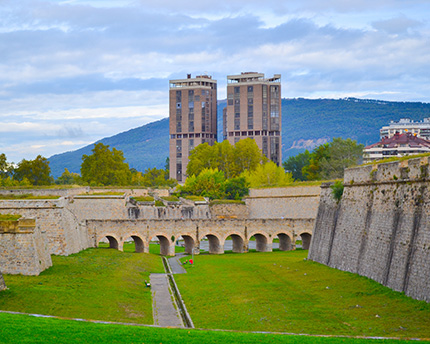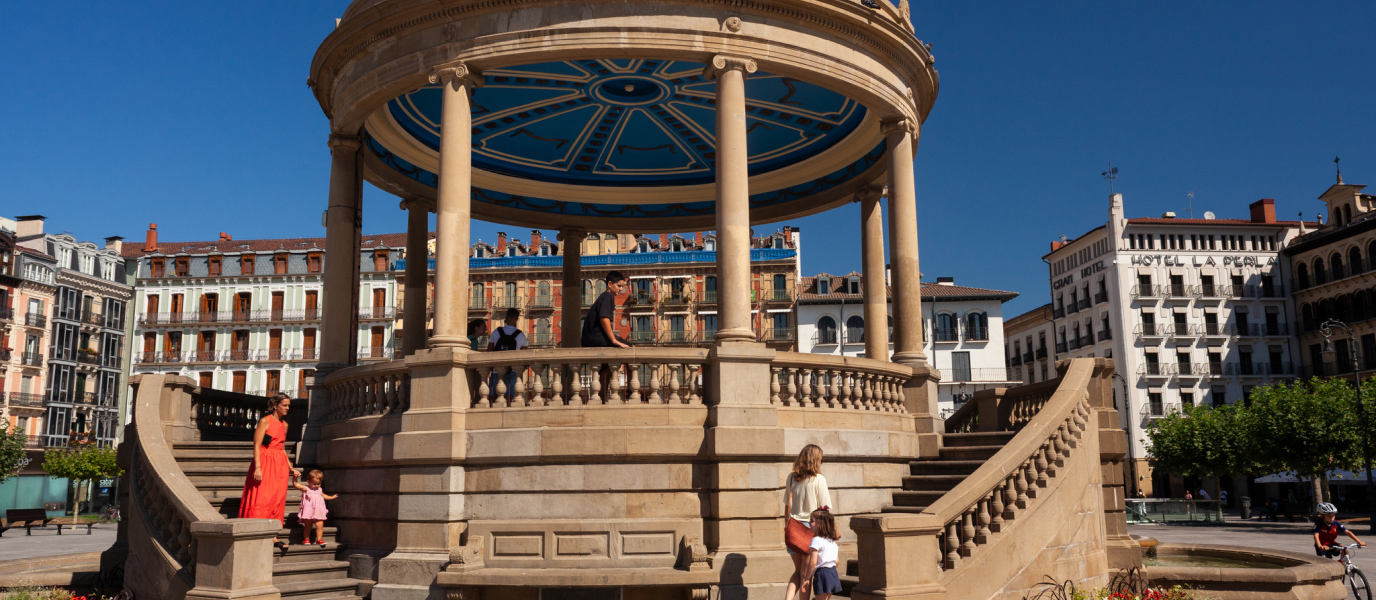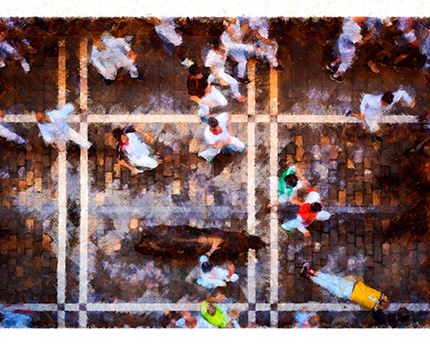Everyone’s heard of Pamplona and the running of the bulls, but the capital of Navarre has much more to see and enjoy aside from the famous Sanfermines. Its historic centre has numerous architectural gems like the cathedral, and lively squares that are perfect for a coffee or drink, like Plaza del Castillo. Pamplona is on the Way of St James and several green spaces, such as the citadel and La Taconera Gardens, have become important places in the city.
Plaza del Castillo
This porticoed square was named after an old 14th century castle that stood here ‒ the space occupied by today’s square was once the place-of-arms. Later it was used to grow vegetables, then it became a fairground, a jousting field, and a waste ground, until homes were gradually built up around it in the 18th century. In fact, it was even used for bull fights up until 1844, when the city bullring was finished.
From then on it filled up with kiosks and cafés, eventually becoming the heart of Pamplona that it is today.
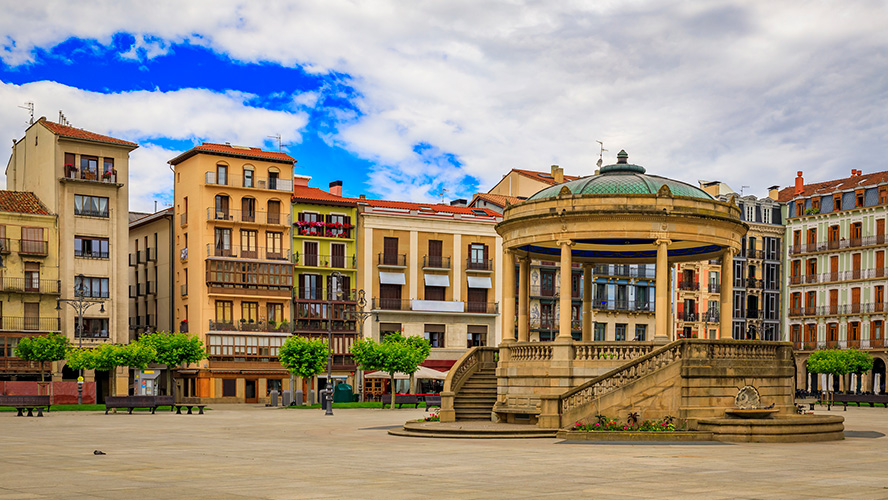
It’s said that the square was the first place in Pamplona that Ernest Hemingway visited in July 1923 and the Café de Iruña, the city’s most famous and historic café, became a meeting place for the American writer and his friends.
The square is lined with buildings that have large wooden balconies, and some of the most important include the Palace of Navarre, Goyeneche Palace, the old Casino, and the central kiosk, which replaced a wooden one at the beginning of the 20th century.
Pamplona Cathedral
The cathedral of Santa María la Real is one of the most extensive complexes in Spain and was built between the 14th and 16th centuries on top of a Romanesque cathedral. Pamplona was one of the most important cities along the Way of St James, so its cathedral was an essential stopping point along the route.
The cloister is one of the best-conserved parts of the cathedral and one of the most spectacular cloisters in Spain. It contains the Barbazana Chapel, topped by octagonal Gothic vaulting, which is the oldest part of the cathedral.
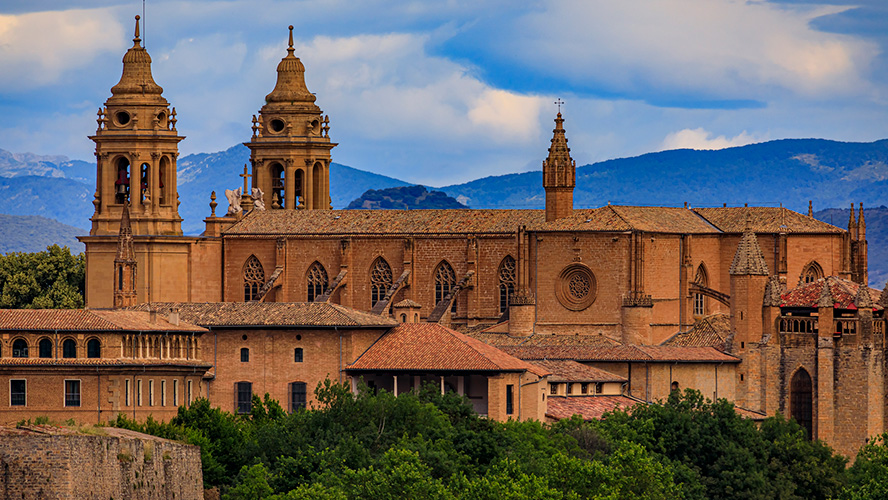
The Neoclassical façade is by Ventura Rodríguez and dates from the end of the 18th century, but the interior remains Gothic.
The cathedral is home to many important sights, such as a 12th century sculpture of Santa María la Real, the oldest sculpture of the Virgin in the region; the place where the kings of Navarre were crowned; a relic of Jesus’ tomb with part of the True Cross; and the royal burial places of Charles III of Navarre and Leonor of Castile.
One of the most impressive features of the complex is the María Bell, the second largest bell in Spain, which rings out from the left tower. It weighs 12,000 kg and it’s a real delight to hear it ring today just as it first did in 1584 when it was installed. Views from the bell tower are spectacular so it’s well worth visiting.
Walls of Pamplona
The rulers of Pamplona were traditionally obsessed with defending the city so exploring the walls is an excellent way to see how it evolved. The five kilometres of wall that remain are connected to the Citadel and have bastions, forts, ravelins, and counterguards.
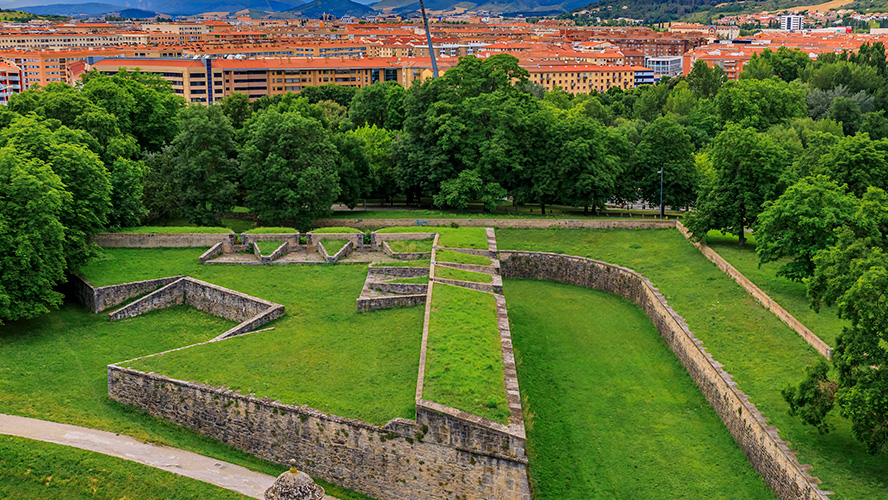
Start your tour at Media Luna Park, where you’ll find San Bartolomé Fort and an interpretation centre that explains these fortifications. The display reveals the true value of the walls and provides information about the main historical events that shaped the city. Don’t miss the Redín Bastion and New Gate viewpoints too.
Navarre Museum
This museum is well worth visiting, both to see the building where it’s housed and the collection inside. It’s in an old hospital of Nuestra Señora de la Misericordia, a palace with a beautiful Renaissance façade and a church that lies close to Cuesta de Santo Domingo.
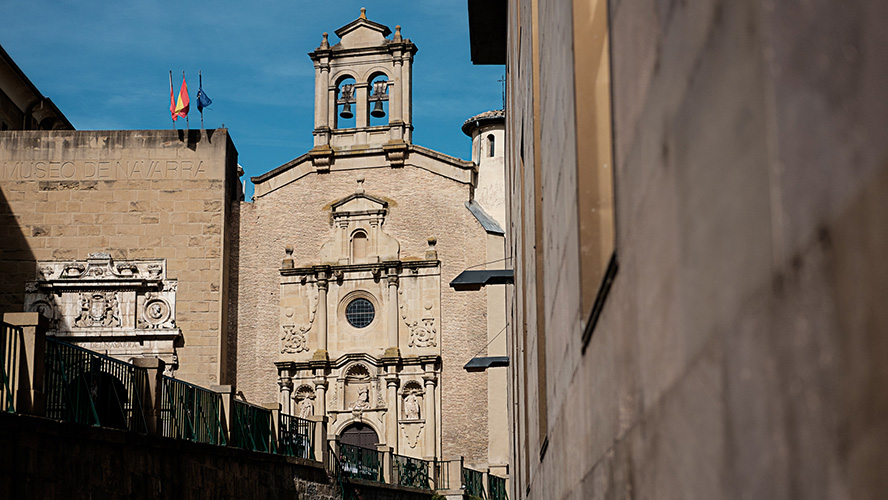
The various rooms inside the museum explain the history of Navarre through its art and a selection of objects; highlights include the Romanesque capitals from the old cathedral, a Roman mosaic dating from the 1st century AD and the Abauntz Map, one of the oldest in Europe. You’ll also see the famous Leyre Chest, a carved ivory box that’s a wonderful piece of Islamic art ‒ no one really knows how it ended up in Navarre ‒ and the portrait of the Marquis of San Adrían by Goya.
Archive of Navarre 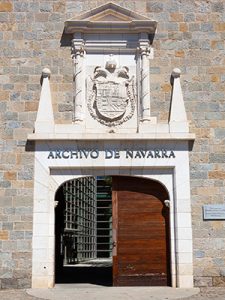
This one of the most important historical buildings in Pamplona because it was the Palace of the Kings of Navarre from the 16th century onwards. The church always fought for this incredible place, which was later the home of viceroys and then the military government.
The Archive stands next to the city walls, right in the historic centre, and in 2003 comprehensive restoration work began on the building by Rafael Moneo. There’s a huge 11-storey tower next to the palace, although most of it is underground. It was used to store the paperwork generated by one of the oldest kingdoms in Spain from the 15th to the 19th century.
The refurbishment work conserved the original vaulted Gothic hall, one of the most-visited rooms, and created a glass inner courtyard that combines old features with more modern elements.
Parish church of San Lorenzo
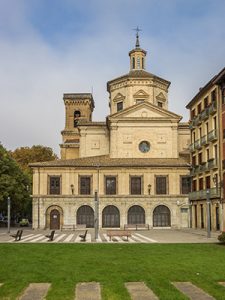
This parish church was built on the remains of an earlier 13th century church of which no traces now remain. Today, you’ll see a Neoclassical façade and several Baroque elements. However, it’s one of the most important churches in Pamplona because it’s home to a sculpture of San Fermín, made between 1696 and 1717, and because it’s the starting place of the procession of San Fermín, which leaves here every 7 July.
La Taconera
These are the oldest gardens in Pamplona and were designed in the French style in 1830; they still retain the same air of romanticism that was originally intended. The gardens are full of huge trees, including beech, magnolia and even ginkgo, and you’ll even spot an eye-catching 40-metre-high giant sequoia.
But the most popular tree is probably the Japanese pagoda tree that grows by the Café Vienés, a wonderful spot to stop for a morning or afternoon coffee.
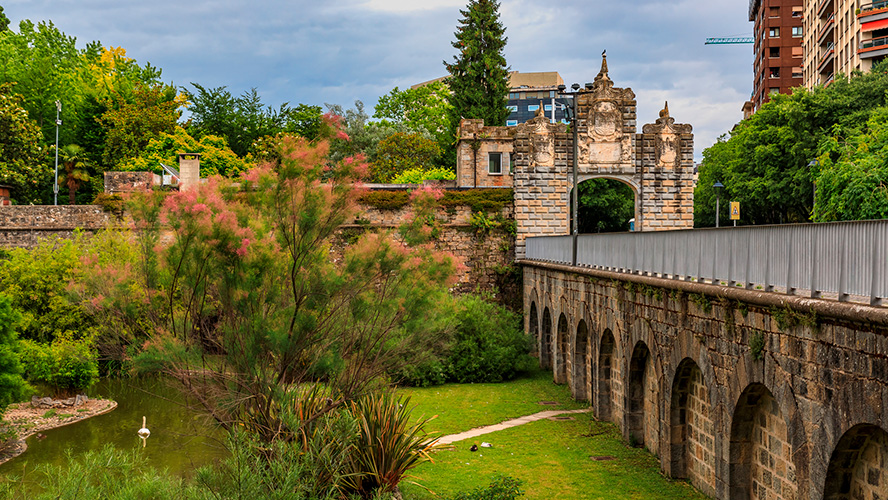
The moat of the old bastion is now home to ducks, peacocks, pheasants and even deer, who come here to enjoy the water. The gardens are also decorated with numerous statues, such as the Julián Gayarre Monument, in the centre, and the statue of Burlada-born composer Hilarión Eslava.
Citadel
This defensive structure is one of the best-conserved military buildings in Spain and one of the most impressive in Pamplona. It was built in 1517 on the orders of Philip II to protect the city against constant attacks by the French. Today the fortress is a park and when you visit, you’ll be surprised by its five-pointed-star shape with bastions, pavilions, and moats.
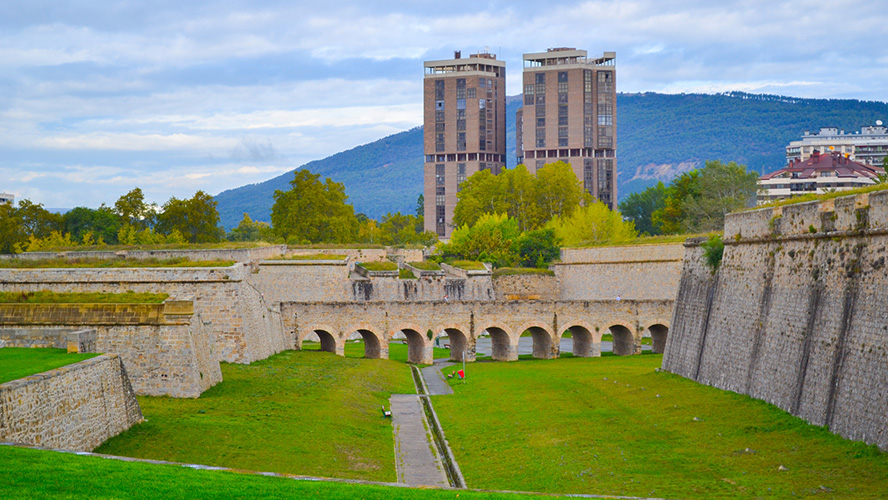
The park is open all day for people to stroll around inside its walls or to do sport.
Calle Estafeta
One of the tours that is most popular with tourists who visit Pamplona is the route along the San Fermín bull run. People typically go to where the bulls are released, head along Cuesta de Santo Domingo and cross Plaza Consistorial to reach famous Calle Estafeta. You’ll often hear the street’s name when you see the running of the bulls on television because it leads straight to Pamplona bull ring.
It got its name (estafeta means post office in Spanish) because in the 18th century the city’s first post office stood here; the street is actually very narrow and different to what you see on TV.
San Fermín
This saint is an essential part of everything that happens in Pamplona so it comes as no surprise to learn that his chapel is one of the most-visited places in the city. It’s inside the church of San Lorenzo and has been home to the small sculpture of the city’s patron saint since 6 July 1717. Relics of San Fermín have been stored near this beloved polychrome statue’s chest since the 18th century.
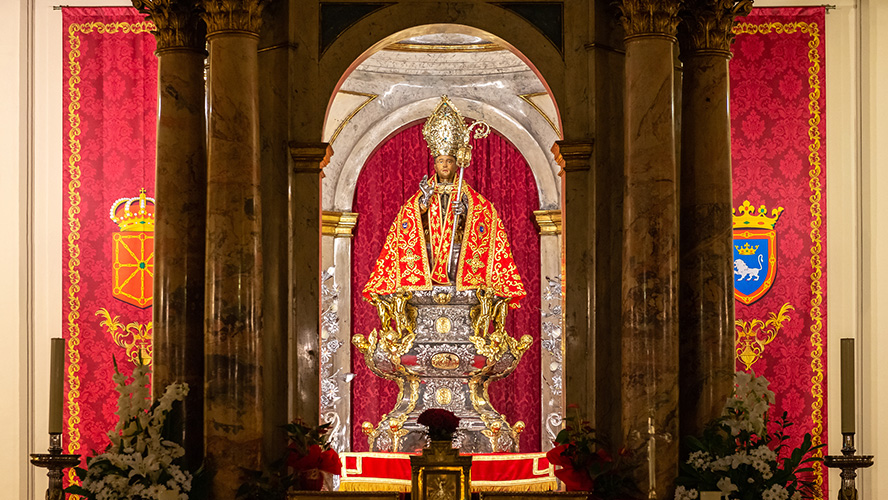
It’s not clear whether San Fermín’s face was burned or whether the wood is naturally dark but it’s interesting to note that the saint is fairly dark-skinned. The chapel is open to visitors every day in the morning from 8.30 am to 12.30 pm and in the afternoon from 5.30 pm to 8.30 pm.
Where to eat in Pamplona
Culinary tradition in Pamplona means going out for pintxos in the city’s most famous streets. Going from bar to bar to eat tapas is known as ‘poteo’ in Navarre. The most traditional areas are the historic centre and Estafeta, Zapatería, San Nicolás and San Antón.
Essential stops on your tapas tour include El Gaucho, Bar Fitero, where you simply must order a filomena, and Bodegón Sarría for an escombro.
It’s perfect if you’d like to sit down in one place for a while rather than moving from bar to bar.
Where to stay in Pamplona
One of the best accommodation options in Pamplona is the Occidental Pamplona because it has a fantastic location that makes it easy to explore the whole city.
This four-star hotel guarantees a comfortable and relaxing stay and is perfect for ensuring you don’t miss any of the city’s attractions and can enjoy its history, food, and green spaces.
The Occidental Pamplona has fully equipped rooms that are suitable for guests travelling as a family, a couple or with friends. Its restaurant serves excellent food and is wonderful way to sample the typical dishes of Navarre.
Frequently asked questions
What are the most important sights in Pamplona? You have to visit the cathedral, the historic centre, emblematic streets like Estafeta, the walls and the citadel. And make sure to stop off for a coffee in Plaza del Castillo.
What can you see for free in Pamplona? Most of the places visited by tourists in Pamplona are free, but you have to pay to enter the cathedral and Navarre Museum.
Where is good to eat in Pamplona? The best way to try typical food in Pamplona is to go out for ‘poteo’, i.e. stopping off for tapas in different bars around the historic centre. You’ll definitely want to include Bar Fitero and Bodegón Sarría on your tapas route!





































































